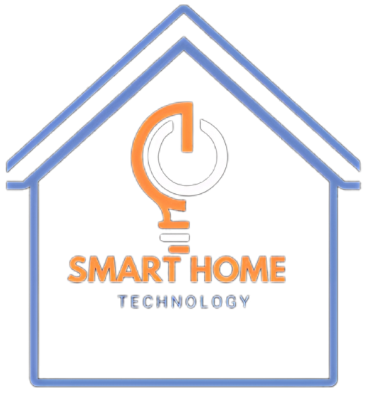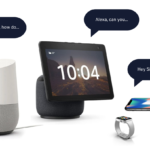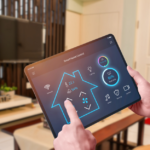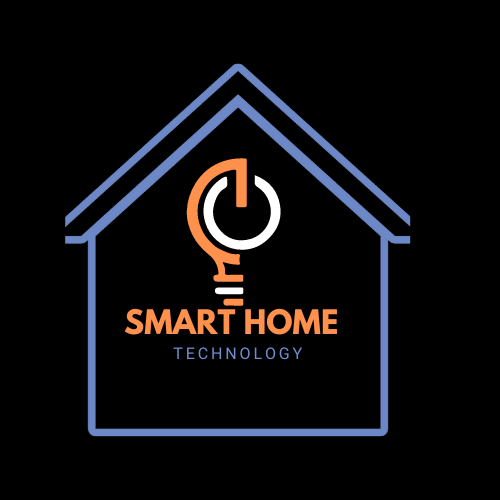Discover how voice-controlled smart assistants can make daily life easier for adults. This guide covers the most benefits, suggests some devices, discusses safety concerns, and shares valuable tips for picking and using smart assistants.
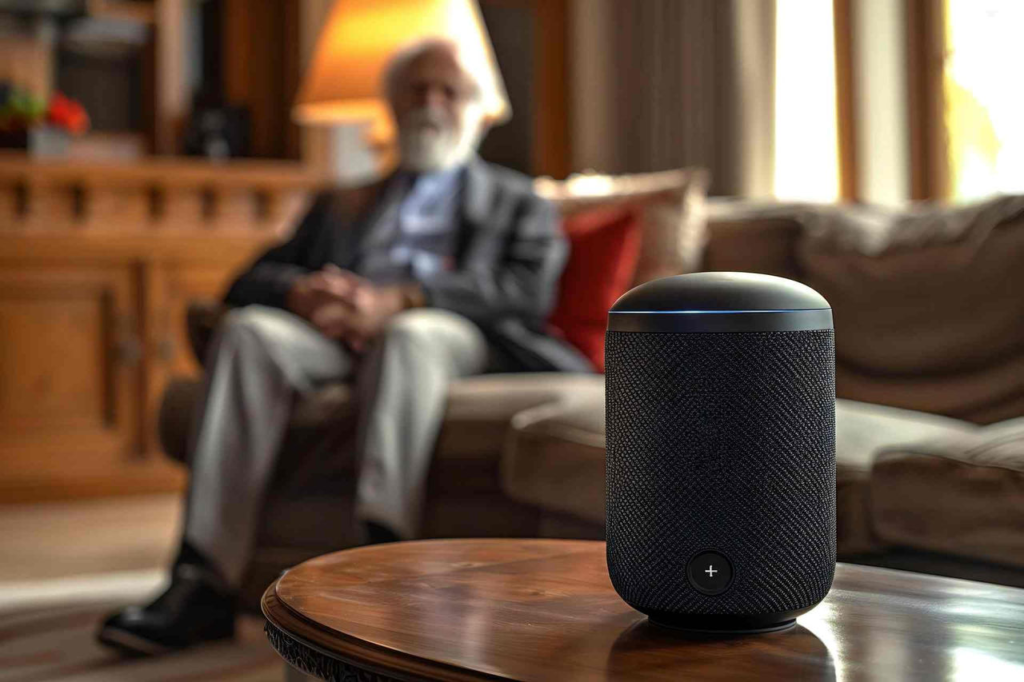

Table of Contents
Introduction
Technology and age may not go well together. I’ve seen, especially with my grandparents, how smart assistants have made a difference for older people. A quick “Hey Alexa, what’s the weather?” or “Siri, remind me to take my medicine” has made their lives much more manageable in ways I never expected.
If you’re concerned about an older family member having trouble with daily activities, missing appointments, or feeling alone, voice-controlled smart assistants could be a great solution. These AI devices help seniors stay in touch, manage their schedules, and control their homes easily without dealing with small screens or complicated buttons.
Not all smart assistants are the same. Some are better for setting reminders, while others are great for fun or controlling smart home devices. This guide will cover everything you need to know, including the best gadgets, safety issues, and practical advice for setting them up for an older user.
How Voice-Controlled Smart Assistants Improve Senior Living
I used to think that voice assistants were cool toys for computer enthusiasts. Helping my grandmother set one up let me realize how much they can impact people’s lives.
First, let’s discuss how simple it is to use without touching your hands. Many older people are stiff or have problems moving, making it difficult to feel the little buttons on phones or remote devices. They can easily use speech commands to call their family, turn on lights, or change the temperature. You don’t have to worry about using touchscreens or tiny buttons!
Next is the reminder tool. My grandma has always been independent, but she sometimes forgets to take her medicine. Now, Alexa kindly reminds her daily at 8 AM and 6 PM. It’s like having a personal helper who always remembers everything.
These assistants are helpful and make great companions. They play music, tell jokes, and read the news out loud. A family friend now listens to audiobooks every night before bed, which she didn’t do before because reading on a screen made her eyes tired.
We should also remember safety. Some smart assistants work with medical warning systems and let seniors call for help by saying, “Call emergency contacts.” This calms both the seniors and their families.
The Power of Smart Technology: Enhancing Daily Life with Hands-Free Convenience and Connectivity
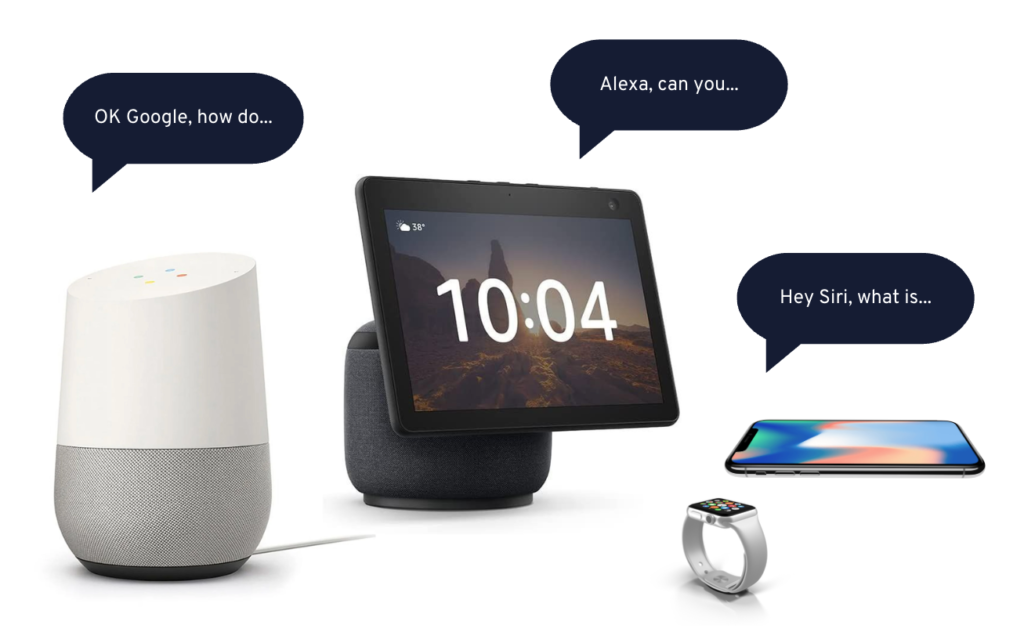

In today’s fast-paced digital world, smart technology is changing how we live, particularly for people with mobility issues or who require extra assistance with daily tasks. Voice-activated devices, AI-powered assistants, and smart home connections make life more convenient, safe, and fun. These inventions increase accessibility and independence by providing hands-free convenience, entertainment, emergency help, and social connection.
Hands-Free Convenience for Those with Mobility Challenges
For individuals with limited mobility, innovative technology provides a seamless means to engage with their environment without requiring physical effort. Devices such as voice-controlled smart speakers, automated home systems, and AI-powered virtual assistants empower users to:
- Control lights, thermostats, and home security using voice commands.
- Operate appliances like TVs, coffee makers, and fans with minimal movement.
- Set reminders, make calls, and send messages hands-free.
- Use smart doorbells with cameras to see and communicate with visitors remotely.
By removing the need for manual operation, these technologies empower users to navigate daily life effortlessly and independently.
Medication and Appointment Reminders
Keeping track of medications and appointments can be challenging, but advanced technology offers dependable solutions. Voice assistants and mobile apps can:
- Send automated alerts for medication doses.
- Schedule doctor appointments and provide reminders.
- Track health data and alert caregivers or family members if doses are missed.
- Integrate with wearable health monitors for real-time updates.
These features promote better medication adherence and timely medical visits, enhancing overall health and well-being.
Entertainment Options: Music, Audiobooks, and News
Entertainment is essential for mental stimulation and emotional well-being. With smart devices, users can access a variety of hands-free entertainment, including:
- Music Streaming: Access personalized playlists, radio stations, and favorite songs via voice commands.
- Audiobooks and Podcasts: Enjoy hands-free bestsellers, educational content, and inspiring stories.
- News Updates: Stay informed with daily news briefings, weather forecasts, and live updates.
- Smart TV Integration: Control TV settings, browse streaming services, and play movies without a remote.
These features offer limitless enjoyment while minimizing the necessity for physical engagement with electronics.
Emergency Assistance and Safety Features
Real-time emergency assistance features are provided by innovative technology, which prioritizes safety. AI-powered safety features on devices assist users:
- Call for emergency help using voice commands.
- Set up fall detection alerts that notify caregivers or emergency services.
- Monitor home security with motion sensors and smart cameras.
- Utilize GPS tracking to ensure loved ones’ safety when outside.
These features provide users and their families peace of mind, guaranteeing quick emergency responses.
Social Connection Through Voice and Video Calls
Staying socially connected is essential for emotional well-being, especially for seniors and individuals with limited mobility. Smart devices enhance social interactions by enabling:
- Voice and Video Calls: You can communicate with family and friends using voice commands on devices like Alexa, Google Assistant, or smart displays.
- Virtual Meetups: Join online social groups, attend remote therapy sessions, or participate in community events.
- Messaging and Email Access: Send and receive texts, emails, and voice messages hands-free.
By assisting users in preserving deep connections, these qualities lessen feelings of loneliness and isolation.
As technology develops, adopting these tools can increase freedom, better health, and a more connected way of life.
Best Voice Assistants for Seniors in 2025
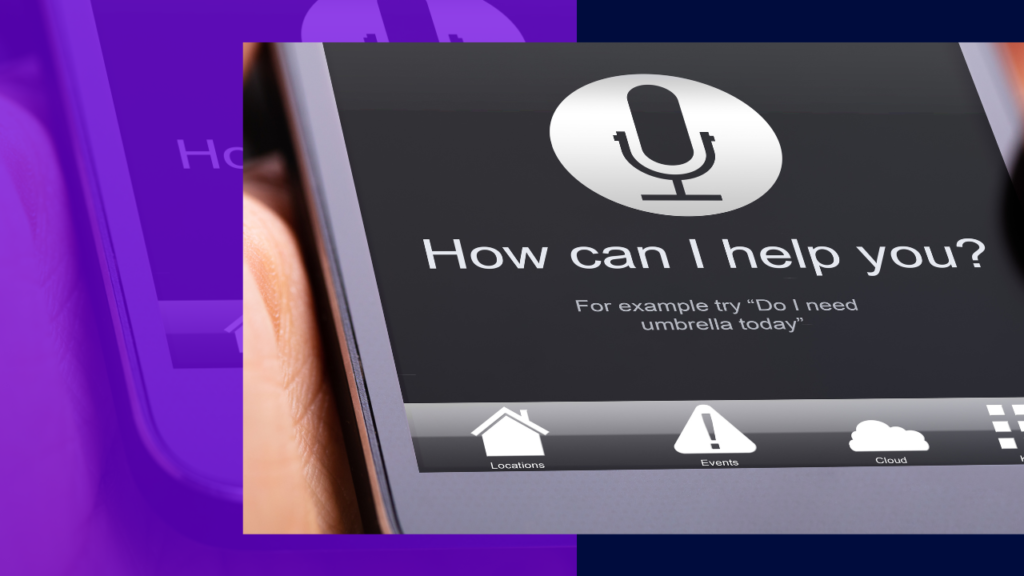

As technology gets smarter, voice assistants have become very important in everyday life, especially for older adults. These assistants make it easy to handle chores, stay in touch, and enjoy entertainment without dealing with complicated interfaces. This article will examine well-known voice assistants like Alexa, Google Assistant, and Siri. We’ll also check out which devices are most straightforward for older users to understand. We’ll talk about the essential features for seniors and compare the advantages and disadvantages of using separate smart speakers versus voice assistants that are part of phones and tablets.
Comparison of Alexa, Google Assistant, and Siri
When it comes to choosing the right voice assistant, each platform offers unique benefits:
Alexa
- Extensive Smart Home Integration: Alexa excels at controlling a wide range of smart home devices, making it a popular choice for seniors who wish to manage their home environment with simple voice commands.
- Skill Library: With thousands of available skills, Alexa can cater to various needs, from medication reminders to playing audiobooks.
- User-Friendly Interface: The Amazon Echo devices are designed for ease of use, which is especially beneficial for seniors new to smart technology.
Google Assistant
- Superior Search Capabilities: Google Assistant leverages Google’s powerful search engine to deliver quick and accurate responses to voice queries, ideal for seniors seeking information or directions.
- Personalized Routines: Google Assistant can learn user preferences over time, offering personalized routines that simplify daily tasks.
- Integration with Android: Google Assistant is seamlessly integrated for seniors using Android devices, offering consistency across devices.
Siri
- Apple Ecosystem Integration: Siri works exceptionally well with Apple devices, providing a cohesive experience for users familiar with the iOS environment.
- Privacy and Security: Apple’s strong focus on privacy makes Siri a trusted option for seniors concerned about data security.
- Ease of Use: Siri’s intuitive commands and straightforward interface make it accessible to users of all ages.
Devices with the Best Voice Recognition for Older Users
Voice recognition technology has improved dramatically, ensuring that voice assistants understand various accents and speech patterns. For older users, clarity and ease of use are key. Some top devices include:
- Amazon Echo Series: Known for its robust voice recognition even in noisy environments, it is well-suited for seniors.
- Google Nest Devices: With advanced algorithms that accurately capture voice commands, Google Nest offers excellent performance for users with diverse speech patterns.
- Apple HomePod: Although pricier, the HomePod provides high-fidelity audio and is optimized for clear voice recognition within the Apple ecosystem.
These devices have good microphones and noise-cancellation features, allowing them to clearly understand voice orders, even if someone speaks softly or unclearly.
Features That Matter Most for Seniors
When evaluating voice assistants for seniors, certain features stand out:
- Simplicity and Ease of Use: A straightforward, intuitive interface is crucial. Large, legible displays and straightforward voice commands can help seniors navigate technology without frustration.
- Accessibility Options: Features such as adjustable speaking speed, volume control, and clear audio feedback are essential for users with hearing or vision impairments.
- Health and Safety Integrations: Medication reminders, emergency assistance commands, and integration with wearable health devices can provide peace of mind.
- Customizable Routines: The ability to set up personalized daily routines—such as news briefings, weather updates, and reminders—enhances independence.
- Connectivity: Seamless connectivity with devices like smart TVs or home security systems can create a more integrated and supportive environment.
Standalone Smart Speakers vs. Built-in Voice Assistants (Phones, Tablets)
Choosing between standalone smart speakers and built-in voice assistants depends on the user’s lifestyle and needs:
Standalone Smart Speakers
- Advantages:
- Dedicated Device: Smart speakers like Amazon Echo, Google Nest Hub, or Apple HomePod are designed solely for voice interactions, free of distractions from other apps or notifications.
- Enhanced Audio Quality: Standalone speakers often offer superior sound quality, ideal for music, audiobooks, and voice clarity.
- Broad Smart Home Integration: These devices typically integrate well with a wide range of smart home gadgets, providing centralized control over the home environment.
- Considerations:
- Cost: Investing in a dedicated device might be an additional expense.
- Space Requirements: A standalone device requires a designated space in the home for optimal performance.
Built-in Voice Assistants on Phones and Tablets
- Advantages:
- Portability: Smartphones and tablets are always with the user, making voice assistance available wherever they go.
- Multi-Functionality: These devices combine communication, entertainment, and connectivity features, reducing the need for multiple devices.
- Familiarity: Many seniors already use phones or tablets, so adding voice commands may feel like a natural extension of their existing technology.
- Considerations:
- Battery Life: Relying on mobile devices may require frequent charging.
- Limited Home Integration: While smartphones can control smart devices, they may not offer the same level of dedicated integration as standalone smart speakers.
Voice assistants like Alexa, Google Assistant, and Siri are changing how older adults use technology by making it easier and more accessible and improving their ability to connect with others. By knowing the strengths of different platforms and devices, seniors and their caregivers can choose the best options that meet their needs and tastes, helping them improve their quality of life in a technology-focused world.
Setting Up a Smart Assistant for an Elderly Loved One
Voice assistants are revolutionizing how elderly people stay connected, handle everyday responsibilities, and preserve their independence. Those who are not tech-savvy may find it challenging to get started. However, seniors might benefit from a hands-free assistant that streamlines routines—from contact management to prescription reminders—with a few easy customization options and helpful advice. Here are some essential tactics and best practices to help you get the most out of voice assistants.
Simple Setup Tips for Non-Tech-Savvy Users
Getting started with a voice assistant need not be overwhelming. Here are several tips to ensure a smooth setup:
- Follow Step-by-Step Guides:
Use clear, visual tutorials available on manufacturer websites or senior-focused technology blogs. Many guides use large fonts and simple language to explain how to connect your device to Wi-Fi and download the companion app. - Seek In-Person or Remote Help:
If setting up the device yourself feels too challenging, ask a trusted family member or caregiver for assistance. Many manufacturers also offer remote support sessions specifically designed for seniors. - Keep It Minimal:
Begin with one core function (for example, checking the time or setting a reminder) and gradually explore additional features. This approach minimizes confusion while building confidence. - Use Built-in Instructions:
Most modern devices include an interactive setup wizard on-screen that guides you through connecting to Wi-Fi and linking your account. Follow these prompts carefully for the best start. - Test the Device:
Once set up, run a few simple voice commands—such as “What time is it?” or “Play some music”—to ensure the device responds correctly.
These straightforward steps help older adults start using their voice assistant quickly and confidently.
Customizing Reminders, Routines, and Contacts
One of the most significant benefits of voice assistants is their ability to help organize daily life. Customization makes these devices even more valuable:
- Set Personalized Reminders:
You can program your voice assistant to alert you about medications, appointments, or daily tasks. For example, you could say, “Remind me to take my pills at 8 a.m. every day.” You can adjust the alert sound and volume so it’s easily heard. - Create Daily Routines:
Many voice assistants allow you to bundle several tasks into a single routine. You might say “Good morning” to trigger a routine that reads the weather, lists your appointments, and even plays your favorite morning tune. This feature minimizes the need to remember multiple commands. - Manage Contacts Easily:
Update and maintain your contacts using simple voice commands. Many devices allow you to add or call a contact by saying, “Call Barbara,” making communication straightforward. - Use Visual Cues (if available):
Devices with screens, like smart displays, allow you to view reminders and routines visually. This dual mode of communication helps reinforce the spoken alerts.
Customizing these features ensures that your assistant works as needed, offering a personal touch to your daily schedule.
Adjusting Voice Recognition for Better Accuracy
For accurate responses, it’s essential that your voice assistant correctly understands your commands:
- Train Your Assistant:
Most voice assistants include a “voice training” or “voice recognition” feature. Follow the prompts in your device’s settings to read a few phrases aloud. This helps the system recognize your voice and accent better. - Speak Clearly and Consistently:
When speaking commands, use speaking commands, use. If your assistant struggles to recognize you, try reducing background noise or positioning the device closer to where you talk. - Review and Adjust Settings:
If you prefer softer speech, you can adjust the sensitivity or enable features like “Whisper Mode” in the settings menu (often found under “Voice” or “Accessibility”). - Keep Software Updated:
You should regularly update your device’s firmware and apps. Updates can include improvements to voice recognition algorithms, which will ensure better accuracy over time.
These adjustments can lead to more reliable responses and a smoother interaction with your voice assistant.
Privacy and Security Settings Seniors Should Know
Maintaining privacy and security is crucial, especially when voice assistants always listen for a wake word. Here’s how seniors can safeguard their information:
- Review Data Sharing Settings:
Review the data collected in the device’s companion app and decide whether to allow certain types of usage (such as personalized recommendations or history tracking). Many apps allow you to disable recording features when not needed. - Enable Privacy Modes:
Some voice assistants have a “mute” or “privacy” button that disables the microphone. Use these features when you want privacy or during sensitive conversations. - Manage Permissions:
Check which third-party apps have access to your voice assistant. Limiting access can reduce unwanted data sharing. - Regularly Check for Updates:
Updating your device ensures you benefit from the latest security patches and privacy improvements. - Learn About Wake Word Alternatives:
If you’re concerned about accidental activations, consider changing your device’s wake word (if supported) to one that minimizes inadvertent triggers. - Educate Yourself:
Familiarize yourself with the privacy policies and settings available on your device. Many senior-focused guides explain what each setting does and how it can protect your privacy.
These steps will help ensure your voice assistant remains a trusted, secure part of your daily life.
Security and Privacy Concerns: What Seniors Should Know
Although voice assistants such as Apple Siri, Google Assistant, and Amazon Alexa make daily chores more convenient, they also present significant security and privacy issues. To securely enjoy the advantages of hands-free technology, seniors must be aware of these concerns. Here are some essential things to think about:
· Addressing Fears About Being “Spied On”
- Continuous Listening: Voice assistants always listen for wake words, which can create fears that they may inadvertently record private conversations.
- Misactivated Recordings: Incidents of accidental activations have caused some users to worry that personal discussions are being recorded without their consent.
- Transparency Concerns: Seniors may not fully understand how voice data is collected or used, which can contribute to their mistrust of these devices.
· How to Disable Data Collection and Improve Privacy
- Review and Adjust Settings: Access your assistant’s privacy settings to limit data collection—such as opting out of human review or setting recordings to auto-delete.
- Disable Always-On Features: When not in use, turn off the “always listening” feature or use the physical mute buttons available on many devices.
- On-Device Processing: Consider devices or updates that offer on-device processing, reducing the need to send data to the cloud for analysis.
· Safe Voice Commands for Banking and Personal Information
- Avoid Sensitive Data Requests: Refrain from using voice commands to share or access banking details, passwords, or other sensitive personal information.
- Use Additional Authentication: For financial transactions, ensure that your assistant is set up with multi-factor authentication and that voice commands for such actions are restricted.
- Test Commands in Private: Before using voice commands for sensitive tasks, try them out in a secure, private setting to gauge how the assistant responds.
· Alternatives for Extra Security
- Manual Mute Buttons: Devices with a physical mute or privacy button allow you to disable the microphone, ensuring no unintended recordings occur during sensitive conversations.
- Offline Assistants: Consider voice assistants that offer offline functionality. These assistants keep data processing local to your device rather than in the cloud.
- Hybrid Systems: Look for devices that combine voice recognition with additional authentication methods (such as PIN codes or biometric verification) to add extra layers of security.
By solving these issues, seniors can use voice assistants easily while keeping their personal information safe. Regularly checking your privacy settings, keeping up with changes, and using safe voice practices can help you protect your data and have a safer, stress-free experience online.
Real-Life Stories: How Seniors Are Using Smart Assistants
Voice-activated smart assistants such as Amazon Alexa, Google Assistant, and Apple Siri are improving the daily lives of the elderly. Real-life experiences worldwide show how these devices provide companionship, increase safety, and assist elders in maintaining their independence. Here are some convincing examples:
Personal Experiences from Seniors and Caregivers
Many seniors and caregivers say intelligent assistants have become reliable allies in managing daily activities. One caregiver described how an Echo device enabled her mother, who lives alone in an assisted living home, to stay connected. The device not only gave gentle reminders for drugs, but it also allowed her to quickly summon family members with a simple voice command. Seniors expressed gratitude for rapid responses and discovered that even basic activities, such as inquiring about the weather or playing a favorite song, provided a sense of joy and comfort.
A Smart Assistant Helping a Visually Impaired Senior
Smart assistants provide a unique solution for seniors with visual impairments to solve daily obstacles. In one notable case, a vision handicapped senior learned to utilize voice commands to navigate her surroundings without assistance. She may use a smart assistant to get news updates and weather forecasts, and she can even play audiobooks or music without relying on her eyesight. This independence increased her quality of life and reduced her need for caregivers for basic tasks, allowing her to remain active and self-sufficient.
Increased Independence and Reduced Loneliness
Smart assistants are more than simply digital assistance; they are becoming companions. Several seniors indicated that connecting with a voice assistant reduced feelings of isolation by providing consistent, friendly encounters. One senior described how, when she was feeling lonely, the smart assistant’s chat and music raised her spirits and made her feel like she had a buddy. Many people feel more independent now that they can operate smart home gadgets, create reminders, and access information without negotiating complex interfaces.
Conclusion
Voice-controlled smart assistants are more than cool gadgets; they’re practical tools that can enhance daily life for seniors. These devices help make life easier and more enjoyable as we age, whether by setting reminders, keeping in touch with family and friends, or managing the home without hassle.
If you’re considering getting one for yourself or someone special, why not start with something small? Choose a device that’s easy to use, tweak some key commands, and see how it fits into their daily lives. They’ll probably wonder how they ever got by without it.
Have you or anyone you know tried using a smart assistant as you age? I’d like to hear about your experiences in the comments. How have these devices made a difference for you?
FAQs
Are voice assistants complex for seniors to use?
Not at all! Once set up, they’re as easy as saying a command out loud. Many devices even learn the user’s voice over time for better accuracy.
Which intelligent assistant is best for a senior who isn’t tech-savvy?
Amazon Alexa and Google Assistant are the most user-friendly options. Alexa is great for reminders, while Google Assistant has excellent voice recognition.
Can voice assistants help seniors with medical needs?
Yes! They can remind users to take medication, schedule doctor’s appointments, and connect with telehealth services.
Are smart assistants safe for personal information?
Most assistants have privacy settings that allow users to limit data collection. For example, you can mute the microphone, delete voice recordings, or disable personalized ads.
Can a smart assistant call 911 in an emergency?
Some can, but not all. However, they can call emergency contacts or integrate with third-party medical alert systems.
What’s the easiest way to set up a smart assistant for a senior?
You can set it up with basic commands, like calling family members or checking the weather. You can also customize voice settings for better recognition and enable reminder routines.
